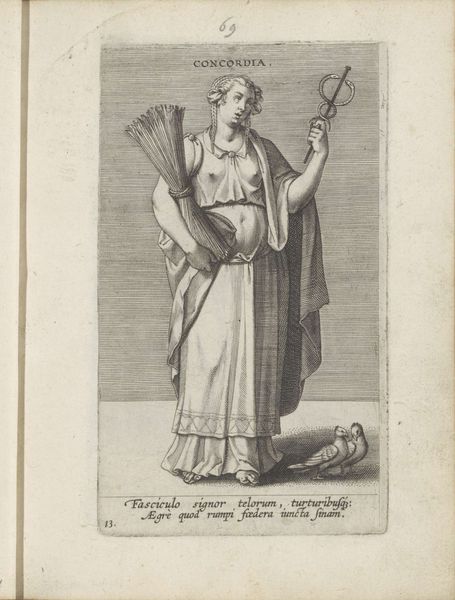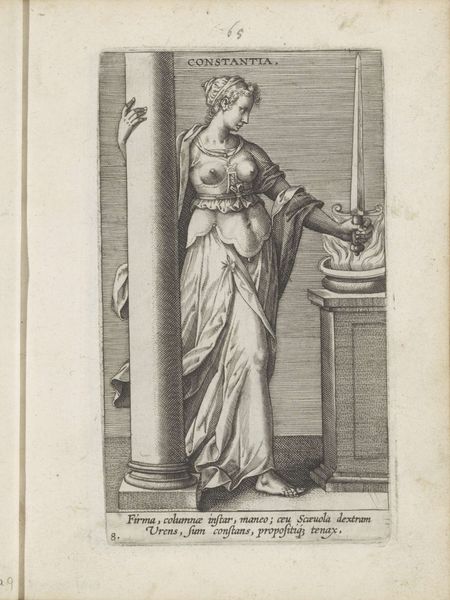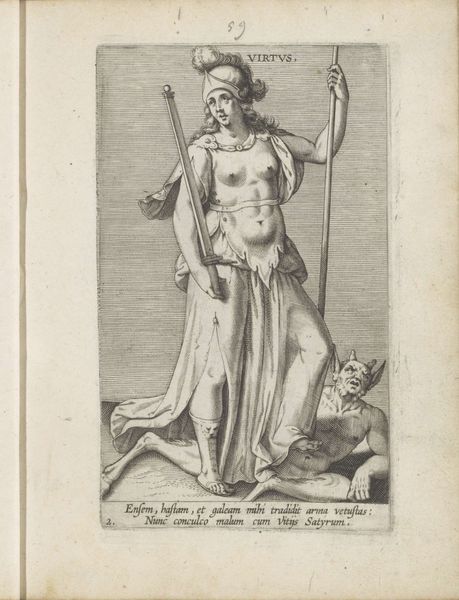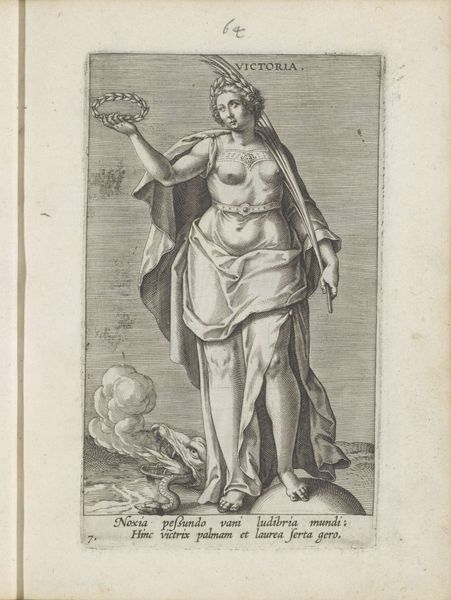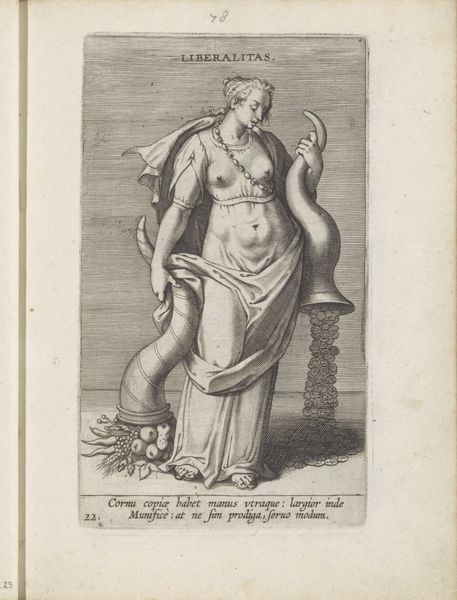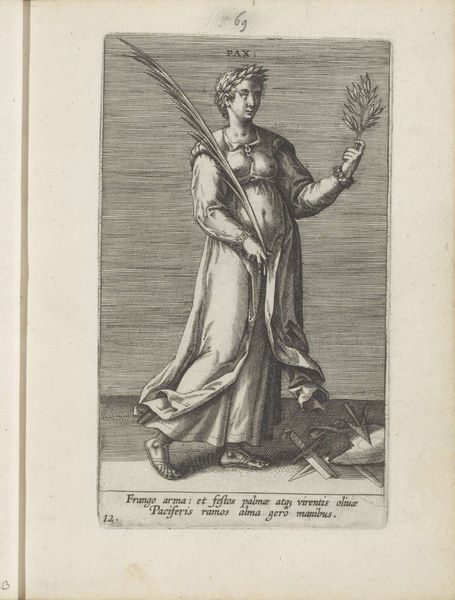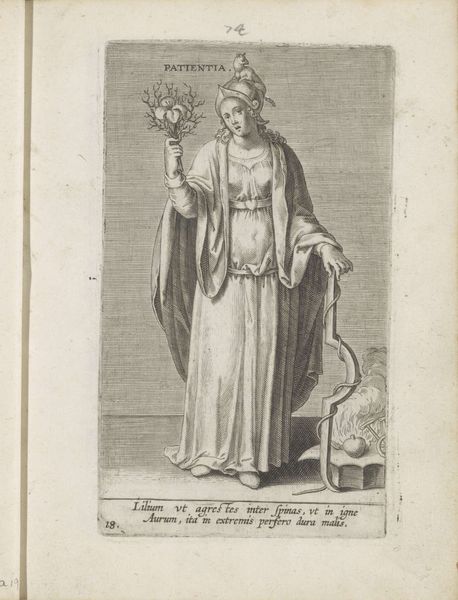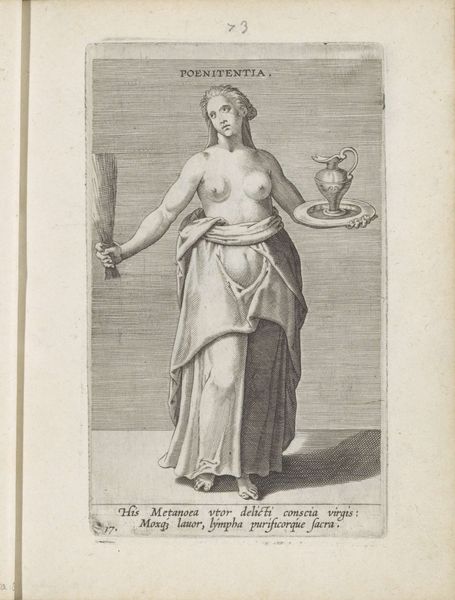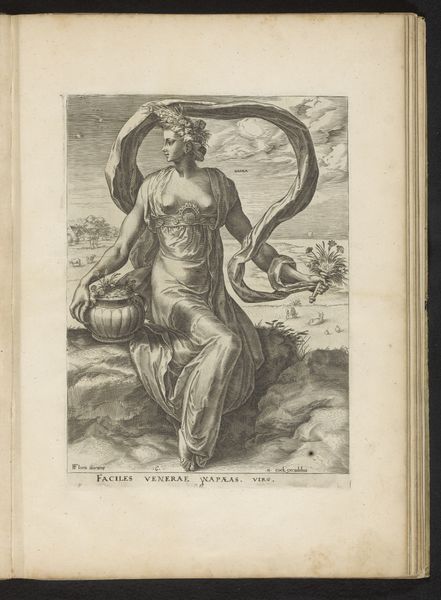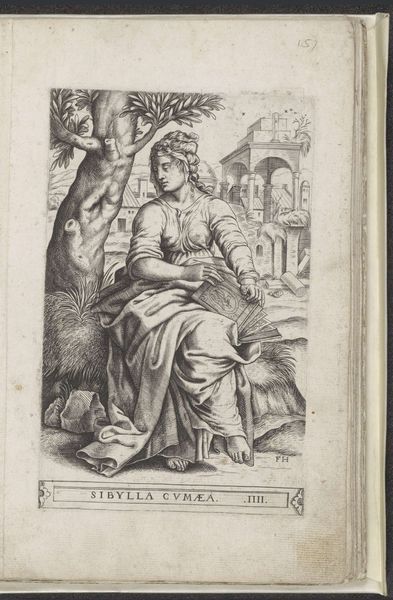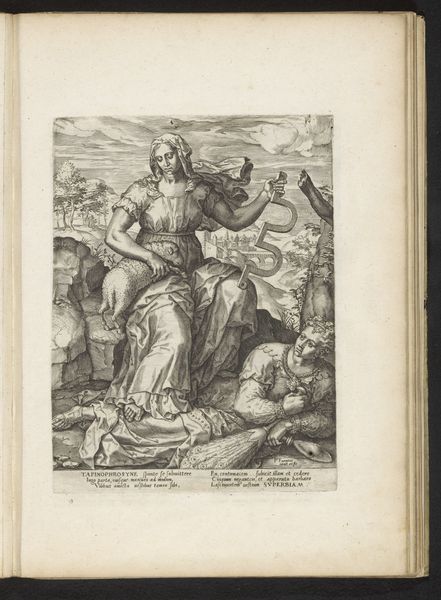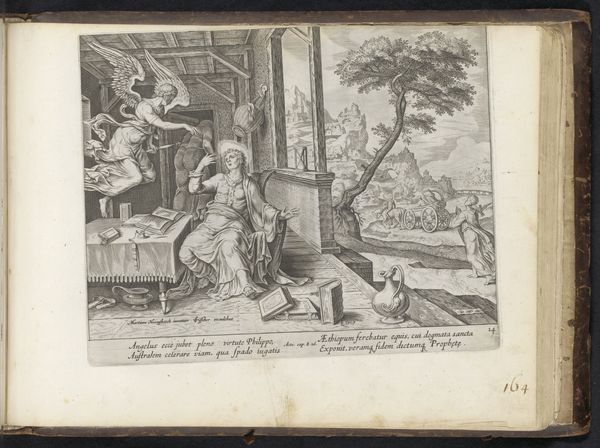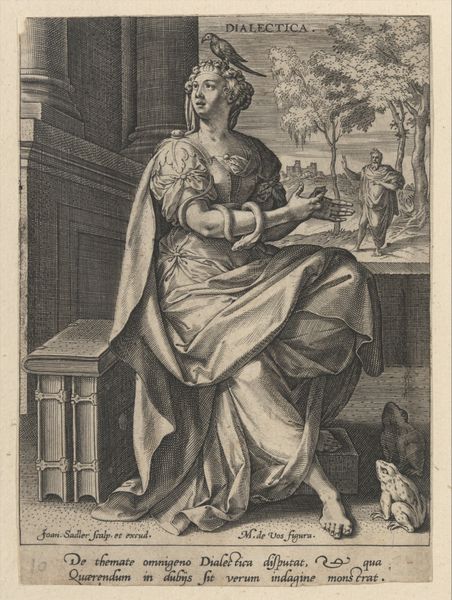
Dimensions: height 152 mm, width 90 mm
Copyright: Rijks Museum: Open Domain
Curator: My first impression is one of intense suffering. There's something so vulnerable about the figure's pose. The textures are so finely rendered, too— you can almost feel the rough material of her garments. Editor: This is "Kwelling," an engraving by Philips Galle, created around 1585-1590. We're currently viewing it here at the Rijksmuseum. What strikes me is how the image engages with representations of affliction in Early Modern Europe, not merely as a fact of life but as something produced and mediated through societal forces. Curator: Produced in what sense? The image feels very raw, immediate in its depiction of anguish. Editor: In the sense that Galle, by crafting this image, participates in the era’s discourse on tribulation and faith. Consider how the female figure embodies both physical and spiritual oppression: her hands are bound, mirroring her metaphorical bondage. The labor to produce an image and the social function that that images carries is important to note. Curator: Yes, and the wolf biting at her heel—a very visceral embodiment of torment! Thinking about the process of engraving, how the artist would have meticulously cut into the copperplate to create these fine lines. Each line, each mark, is a deliberate act of translating suffering into a tangible, reproducible image. Editor: And notice the contrast, this isn’t simply raw pain, but tribulation in relationship to societal constructs like gender and power. The chained woman calls to mind a plethora of contemporaneous parallels - domestic servitude and witch trials come to mind. Even Galle's choices – like emphasizing certain narrative elements or portraying the figure in this stylized way— shape how viewers engage with ideas about suffering. It turns trauma into a narrative about something else. Curator: Absolutely. Thinking about its original context, its availability as a print means that the image was relatively accessible, circulated, and consumed. Imagine the implications for the popular understanding of what it meant to be persecuted at the time, when images like this were not so commonplace. Editor: It’s not merely the existence of such artwork that matters, but the complex interaction of production, consumption and meaning that they fostered and reveal to us still today. Curator: Reflecting on the image’s materiality makes it so thought provoking, doesn't it? Editor: Indeed, examining “Kwelling” through a contemporary lens lets us unpack the social politics embedded within seemingly simple images.
Comments
No comments
Be the first to comment and join the conversation on the ultimate creative platform.
